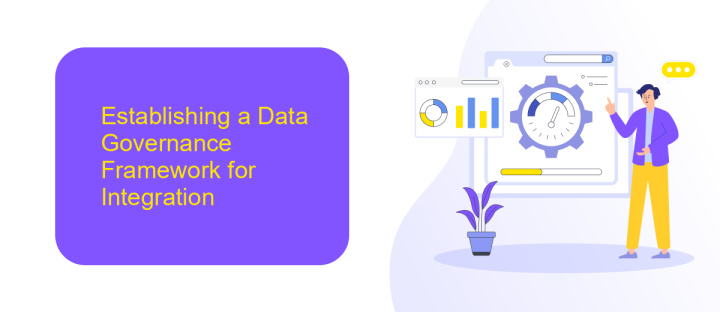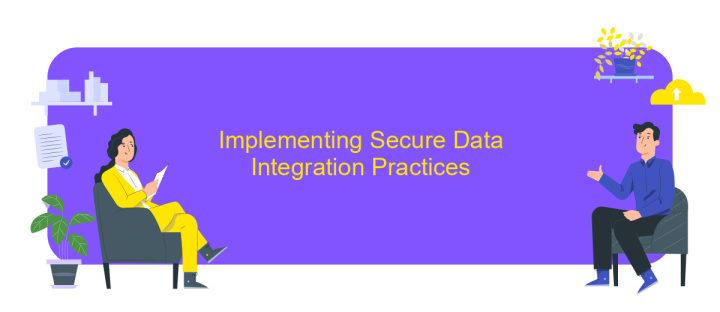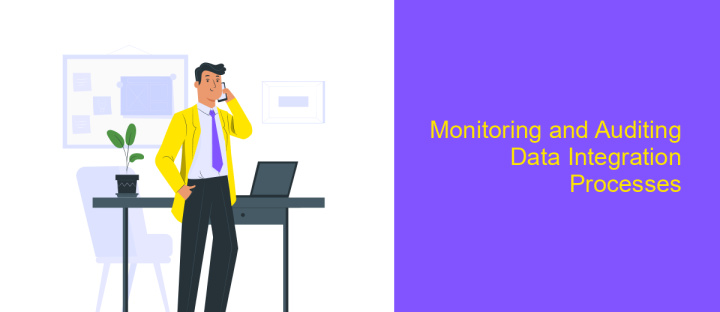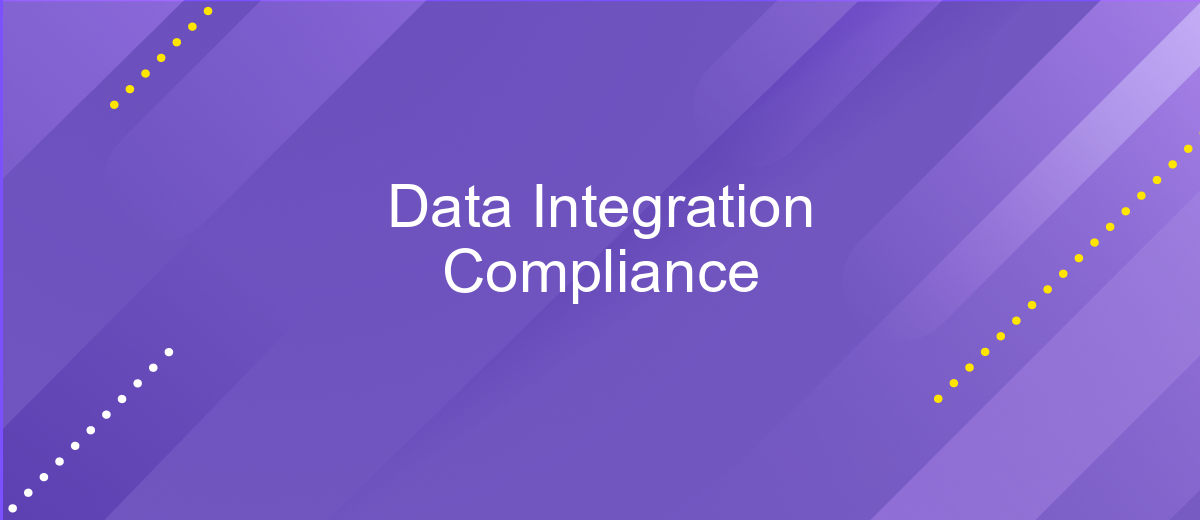Data Integration Compliance
Data integration compliance is a critical aspect of modern business operations, ensuring that data from various sources is seamlessly combined while adhering to legal and regulatory standards. As organizations increasingly rely on data-driven decision-making, understanding and implementing compliance measures is essential to protect sensitive information, maintain data integrity, and avoid potential legal repercussions. This article explores key considerations and best practices for achieving effective data integration compliance.
Understanding Data Integration Compliance Requirements
Data integration compliance is a critical aspect for organizations that manage vast amounts of information across various platforms. Understanding these compliance requirements involves recognizing the legal, regulatory, and industry standards that govern data management. Organizations must ensure that their data integration processes align with these requirements to avoid legal repercussions and maintain data integrity.
- Legal Compliance: Adhere to laws such as GDPR, HIPAA, or CCPA, depending on the jurisdiction and industry.
- Data Security: Implement robust security measures to protect sensitive information from breaches and unauthorized access.
- Audit and Monitoring: Establish processes for regular audits and monitoring to ensure ongoing compliance and identify potential risks.
- Data Governance: Develop a structured framework for managing data quality, privacy, and lifecycle.
- Documentation: Maintain detailed records of data integration processes and compliance measures.
By thoroughly understanding and implementing data integration compliance requirements, organizations can build trust with stakeholders, enhance operational efficiency, and reduce the risk of penalties. This proactive approach not only safeguards the organization but also ensures that data is utilized effectively and ethically.
Establishing a Data Governance Framework for Integration

Establishing a robust data governance framework for integration is pivotal in ensuring compliance and maintaining data integrity across various systems. The framework should begin with a clear definition of data ownership and responsibilities, ensuring that all stakeholders understand their roles in the data lifecycle. This involves setting up policies for data access, quality, and security, which are crucial for maintaining compliance with regulatory standards. Regular audits and monitoring mechanisms should be implemented to ensure adherence to these policies, thereby reducing risks associated with data breaches and non-compliance.
Incorporating integration services like ApiX-Drive can significantly streamline the data governance process. ApiX-Drive facilitates seamless connectivity between diverse applications, enabling automated data transfers while maintaining data accuracy and consistency. By leveraging such tools, organizations can reduce manual errors, enhance data visibility, and ensure that data governance policies are consistently applied across all integrated systems. This not only supports compliance efforts but also improves overall operational efficiency, allowing businesses to focus on strategic initiatives rather than data management challenges.
Implementing Secure Data Integration Practices

Ensuring secure data integration is crucial for maintaining the integrity and confidentiality of sensitive information. Organizations must adopt comprehensive practices to protect data as it moves between systems. This involves understanding potential vulnerabilities and implementing robust security measures to mitigate risks. By prioritizing security in data integration processes, businesses can safeguard their data assets and maintain compliance with relevant regulations.
- Conduct thorough risk assessments to identify potential security threats in data integration workflows.
- Implement strong encryption protocols to protect data both in transit and at rest.
- Utilize secure authentication methods to control access to data integration platforms.
- Regularly update and patch integration software to address emerging security vulnerabilities.
- Monitor data integration activities continuously to detect and respond to suspicious activities promptly.
By following these practices, organizations can enhance their data integration security posture, ensuring that data remains protected throughout its lifecycle. A proactive approach to security not only helps in preventing data breaches but also builds trust with stakeholders who rely on the confidentiality and integrity of the data. Emphasizing secure data integration practices is a strategic investment in the organization's long-term data management success.
Monitoring and Auditing Data Integration Processes

Effective monitoring and auditing of data integration processes are crucial for maintaining data integrity and compliance with regulatory standards. These practices ensure that data flows seamlessly across systems while adhering to organizational policies and legal requirements. By implementing robust monitoring tools, organizations can detect anomalies and potential breaches in real-time, safeguarding sensitive information.
Auditing data integration processes involves a thorough examination of data transactions and transformations. This process helps in identifying discrepancies and ensures that data is processed accurately and securely. Regular audits provide insights into the performance of data integration systems and highlight areas for improvement, enhancing overall data governance.
- Implement automated monitoring tools to track data flow and detect irregularities.
- Schedule regular audits to assess compliance with data protection regulations.
- Maintain detailed logs of data transactions for transparency and accountability.
- Utilize data visualization tools to simplify the analysis of integration processes.
By prioritizing monitoring and auditing, organizations not only protect their data assets but also build trust with stakeholders. These practices enable timely responses to potential threats and ensure that data integration processes align with both internal policies and external regulations.


Ensuring Ongoing Compliance and Adapting to Evolving Regulations
To maintain ongoing compliance with data integration regulations, organizations must establish a robust framework that includes regular audits and monitoring. This involves keeping abreast of the latest legal requirements and ensuring that all data handling practices align with these standards. Utilizing tools like ApiX-Drive can streamline the integration process, offering automated solutions that reduce human error and enhance data accuracy. By leveraging such platforms, businesses can ensure that their data flows are compliant with current regulations, while also being flexible enough to adapt to future changes.
As regulations evolve, organizations need to be proactive in adapting their compliance strategies. This requires continuous education and training for staff involved in data management and integration. Implementing a dynamic compliance management system, which can be easily updated as laws change, is crucial. ApiX-Drive, with its user-friendly interface and customizable features, can assist businesses in modifying their integration processes swiftly, ensuring that they remain compliant without disrupting operations. By prioritizing adaptability and ongoing education, organizations can effectively navigate the complex landscape of data integration compliance.
FAQ
What is data integration compliance?
Why is data integration compliance important?
How can organizations ensure compliance during data integration?
What are some common challenges in achieving data integration compliance?
How can automation tools assist with data integration compliance?
Time is the most valuable resource for business today. Almost half of it is wasted on routine tasks. Your employees are constantly forced to perform monotonous tasks that are difficult to classify as important and specialized. You can leave everything as it is by hiring additional employees, or you can automate most of the business processes using the ApiX-Drive online connector to get rid of unnecessary time and money expenses once and for all. The choice is yours!

